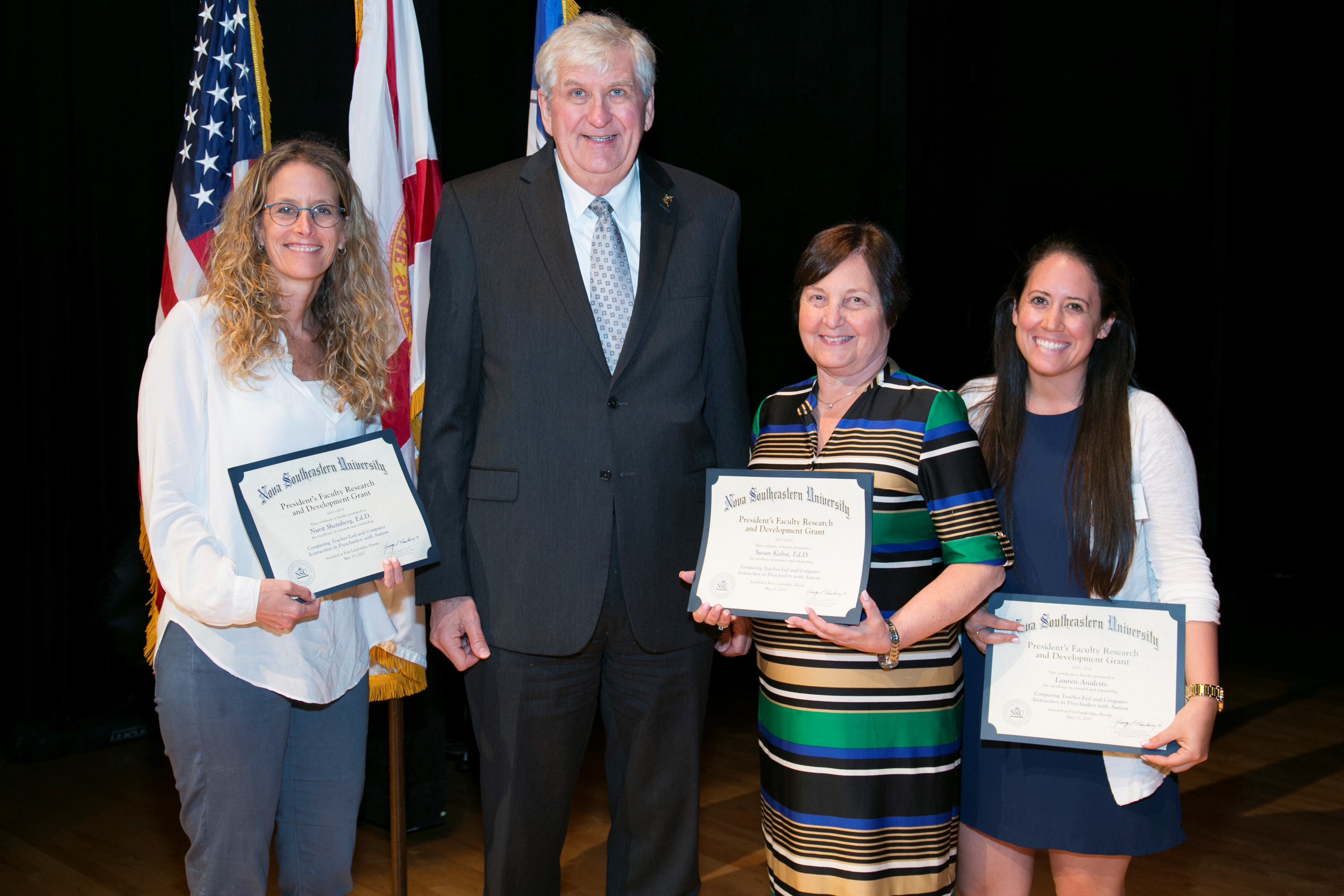Comparing Teacher-Led and Computer Instruction in Preschoolers With Autism
Grant Winners
- Susan Kabot, Ed.D. – Mailman Segal Center for Human Development
- Nurit Sheinberg, Ed.D. – Mailman Segal Center for Human Development
- Tara Sheehan, Ph.D. – Mailman Segal Center for Human Development
- Lauren Analetto – Mailman Segal Center for Human Development
Dean
- Roni Leiderman, Ph.D. – Mailman Segal Center for Human Development
Abstract

There is a paucity of research comparing the effectiveness of two interventions in young students with autism spectrum disorder in a school setting. This is because of the difficulty of achieving high levels of experimental control due to problems randomizing treatment that is directed by a student's Individual Education Program under the Individuals with Disabilities Education Act, the legislative foundation to mandatory special education programs.
This proposal will compare the effectiveness of two interventions that are used with students with autism spectrum disorder at the preschool level for students with autism. Strategies for Teaching Based on Autism Research is the curriculum with a curriculum-based assessment that is currently in use at the Baudhuin Preschool. It is based on the science of applied behavior analysis and uses discrete trial teaching (DT) to teach receptive language and pre-academic concepts. This is a teacher-led intervention. TeachTown is an intervention that is computer-assisted. It also teaches receptive language and academic concepts using discrete trial methodology presented by computer.
A single subject alternating treatment design will be used to evaluate the two interventions, where each of five student participants will receive both interventions and serve as their own controls. In the National Professional Development Center on Autism Spectrum Disorders evaluation of evidence-based practice, 456 studies were reviewed from 1990-2011. Only 48 were group designs and 408 were single subject designs, which demonstrates the state of the research in special education and autism.
The instructor will take the trial by trial data under the STAR condition, while the trial by trial data is automatically taken by the technology in TeachTown. The intervention will last for 3 months and will be delivered by a classroom teachers with NSU students taking fidelity and inter-observer agreement data. Pre and post-testing using standardized measures of receptive language and concept development will also occur. Single subject designs traditionally use visual inspection of graphed results to determine whether there is a difference between the two treatments. Educating students with autism is complex in that most students require low staff-to-student ratios that lead to high cost programs. There is also a shortage of well-trained and supervised teachers and paraprofessionals working with this population. Although there is limited data about the effectiveness of both of these curricula, there are even fewer studies that compare the effectiveness of the two. If it can be shown that students can make comparable or more progress using CAI,that may be one solution to this complex problem.